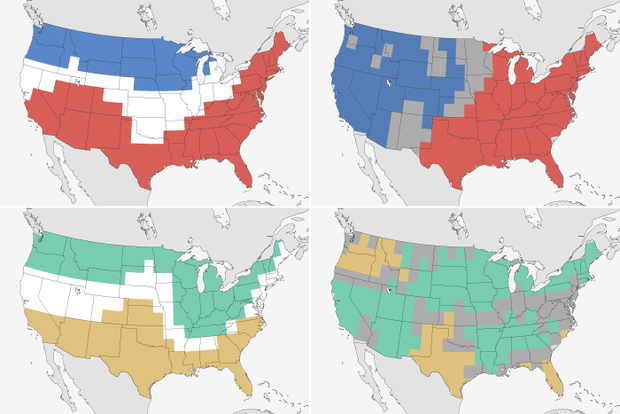Blogs
As our frequent visitors will know, I usually write the top-of-the-month ENSO Blog post. That post covers the outlook for ENSO—the El Niño/Southern Oscillation, aka the entire El Niño/La Niña system. This post, however, is about my other favorite acronym: NMME, the North American Multi-Model Ensemble. It’s an important input to the ENSO outlook, and often pops up in the Blog—for example, Nat just included the NMME forecast for ENSO in the May update post.
Small acronym, big project
In a single sentence, the NMME is a seasonal prediction system that combines forecast information from state-of-the-art computer climate models currently running in the U.S. and Canada (1). Seasonal here mea…
Read article
The tropical Pacific sure knows how to get out of a rut! Just two months after declaring the demise of an almost interminable La Niña, above-average surface temperatures have reclaimed the tropical Pacific, and temperatures in the central-eastern Pacific are expected to continue to rise. Consequently, an El Niño Watch remains in place, with El Niño conditions likely to develop within the next couple of months and then persisting (greater than 90% chance) into the winter.
We care about the potential development of El Niño—the warm phase of ENSO (El Niño/Southern Oscillation, the whole El Niño-La Niña system)—because of the cascade of global impacts t…
Read article
Given the relatively high probabilities for El Niño in our team’s April 2023 ENSO update, I decided to team up with some of my scientific colleagues, Antonietta Capotondi (NOAA Physical Sciences Laboratory and University of Colorado, Cooperative Institute for Research in Environmental Sciences) and Aaron Levine (@afzlevine, University of Washington, Cooperative Institute for Climate, Ocean, and Ecosystem Studies), to explain why making ENSO forecasts during the Northern Hemisphere springtime generally makes us want to skip the forecast. But we, of course, cannot because if a decent-sized El Niño is going to form, it is probably going to form in the spring or summer. Which means as much …
Read article
Well, that was quick! Just two months ago I was writing about La Niña for what seemed like the 97th month in a row, and then by March La Niña had departed. Today we’re hoisting an El Niño Watch, meaning that conditions are favorable for the development of El Niño conditions within the next 6 months. In fact, there’s a 62% chance of El Niño conditions for the May–July period. Read on for the reasoning behind the outlook, thoughts about the potential strength of El Niño, and implications for global weather and climate.
Let’s run some numbers
The March average sea surface temperature in the Niño-3.4 region, our primary monitoring region for ENSO (El Niño/Southern Oscillation, the whole El…
Read article
Don’t look now, but it’s winter outlook verification time! A time when I like to take readers on a statistical sojourn, a mathematical migration, through last year’s winter outlook. By the end of this post, you’ll have been provided with a non-alcoholic, numbered nightcap in the form of an answer to the question “How did the winter outlook do?” (Sorry. I’m in an alliterative mood.)
But first, my yearly warning that some math is involved in this post. Because while it may be easiest to just use our eyes to verify whether the forecast map matched the real winter, our eyes can lie. Plus, we aren’t looking for an easy way out. We’re the ENSO Blog, and you are ENSO Blog readers, for Pete’s sak…
Read article




